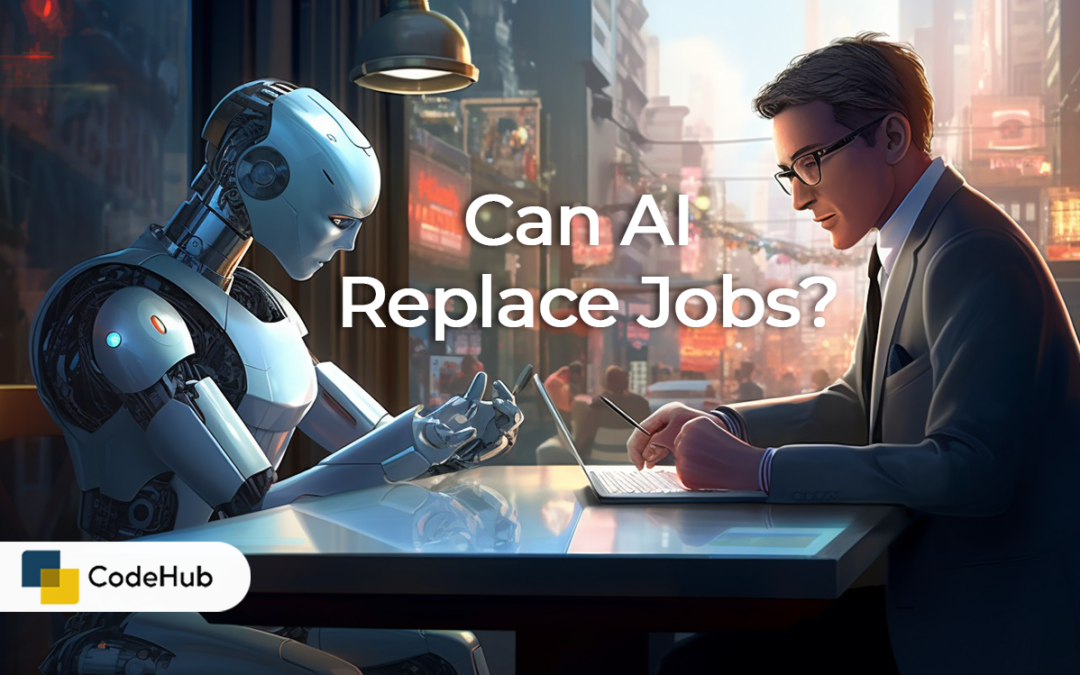Artificial intelligence (AI) is the branch of computer science that aims to create machines and systems that can perform tasks that normally require human intelligence, such as learning, reasoning, and decision making. AI has been applied to various domains and industries, such as healthcare, education, finance, and entertainment. AI has also been applied to various jobs and occupations, such as manufacturing, customer service, and journalism. AI has the potential to improve the efficiency, quality, and innovation of many jobs and occupations, but it also poses the risk of displacing or replacing human workers.
In this blog post, we will explore how AI can replace jobs, and what are the implications and challenges of AI for the future of work. We will also look at some of the examples and trends of AI replacing jobs, and how they can affect the workers and the society.
How AI Can Replace Jobs
AI can replace jobs by performing tasks that are repetitive, routine, or predictable, and that can be automated using algorithms, data, and sensors. AI can also replace jobs by performing tasks that are complex, creative, or unpredictable, and that can be enhanced using machine learning, natural language processing, and computer vision. AI can replace jobs by either augmenting or substituting human workers, depending on the level of human involvement and supervision required.
Some of the examples of AI replacing jobs are:
- Manufacturing: AI can replace jobs in manufacturing by automating the production process, such as assembling, inspecting, and packaging products. AI can also replace jobs in manufacturing by enhancing the design and innovation process, such as creating and testing new products and materials. For example, Tesla is a leading company that uses AI to replace jobs in manufacturing, by using robots, sensors, and software to produce electric vehicles and batteries
- Customer Service: AI can replace jobs in customer service by automating the support process, such as answering queries, providing information, and processing transactions. AI can also replace jobs in customer service by enhancing the customer experience, such as providing personalized and engaging content and features. For example, Bank of America’s Erica is an AI chatbot that can replace jobs in customer service, by helping customers with various banking tasks, such as checking balances, paying bills, transferring money, and getting financial advice
- Journalism: AI can replace jobs in journalism by automating the writing process, such as generating and updating content, such as news articles, reports, and summaries. AI can also replace jobs in journalism by enhancing the research and analysis process, such as finding and verifying sources, data, and facts. For example, The Washington Post’s Heliograf is an AI system that can replace jobs in journalism, by writing and publishing stories on topics such as sports, elections, and finance
What are the Implications and Challenges of AI Replacing Jobs
AI replacing jobs can have various implications and challenges for both workers and society, such as:
- Implications for workers: AI replacing jobs can have positive and negative implications for workers, depending on the type, level, and quality of their jobs. On the one hand, AI replacing jobs can create new opportunities and benefits for workers, such as increasing their productivity, income, and skills, and improving their working conditions, health, and well-being. On the other hand, AI replacing jobs can create new risks and costs for workers, such as reducing their employment, security, and autonomy, and increasing their inequality, stress, and anxiety.
- Challenges for workers: AI replacing jobs can pose various challenges for workers, such as adapting and reskilling, competing and collaborating, and regulating and protecting. Workers may face challenges such as adapting and reskilling to the changing demands and requirements of their jobs, and acquiring new knowledge and competencies to stay relevant and employable. Workers may also face challenges such as competing and collaborating with AI systems and other workers, and finding the optimal balance between human and machine roles and tasks. Workers may also face challenges such as regulating and protecting their rights and interests in the workplace, and ensuring their fair and ethical treatment and representation.
- Implications for society: AI replacing jobs can have positive and negative implications for society, depending on the scale, scope, and impact of the job displacement or replacement. On the one hand, AI replacing jobs can create new benefits and value for society, such as increasing the economic growth, efficiency, and innovation, and improving the social welfare, quality, and diversity. On the other hand, AI replacing jobs can create new costs and problems for society, such as decreasing the social cohesion, stability, and justice, and increasing the social polarization, conflict, and unrest.
- Challenges for society: AI replacing jobs can pose various challenges for society, such as educating and empowering, redistributing and sharing, and governing and regulating. Society may face challenges such as educating and empowering the citizens and workers, and providing them with the necessary skills, resources, and opportunities to participate and benefit from the AI-driven economy and society. Society may also face challenges such as redistributing and sharing the wealth and income generated by AI, and ensuring that everyone has access to the basic needs and services. Society may also face challenges such as governing and regulating the development and use of AI, and ensuring that it is aligned with the human values and interests.

